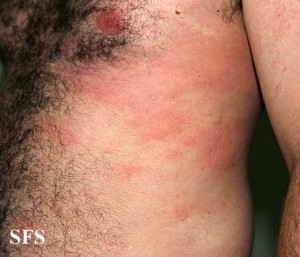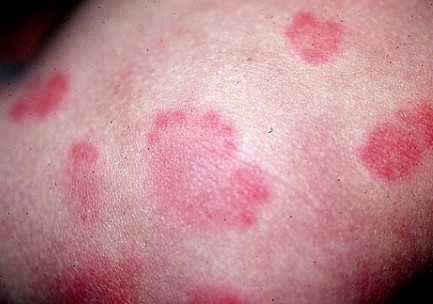Urticaria Types

The three most common urticaria types are water urticaria, contact urticaria, and dermographism. Contact hives are the most common and can be triggered by any cold contact or object. However, a variety of factors can also cause a person to develop urticaria. If you’re not sure what causes your urticaria, consult your doctor to determine the cause.
Urticaria has several types. A primary diagnosis may include contact urticaria and cholinergic urticaria. The symptoms of these types depend on the wavelength of light elicited by the affected person. For example, if the patient has a history of other allergies, such as asthma, the physician will likely suggest allergy testing. Other forms of rashes are considered allergic reactions that have a known trigger.
The symptoms of urticaria vary widely from person to person. Some rashes are more severe than others. The hives can spread widely or be quite large. A biopsy will show that there’s no cellular infiltration. A treatment option can depend on the underlying cause. If a medication or food allergy is the triggering factor, it may trigger an allergic reaction. This rash can be very painful.
There are different ways to diagnose urticaria. Many times, the patient may have more than one type. The underlying cause is the same, and the best treatment option is to treat the disease. The best way to determine the underlying cause is to consult a physician who has a good understanding of the disorder. You may find that the underlying problem is the same in both conditions. For example, an allergy to an allergen or a bacterial infection could cause urticaria.
The urticaria types have different triggering factors. In the former, an allergy to an allergen triggers an allergic reaction. It’s important to understand the underlying cause to treat your urticaria. The causes of an allergy may vary. For instance, the allergic reaction may be the same in both cases. In either case, the best treatment method will depend on the underlying cause of the condition. In some cases, an underlying infection may be the culprit.

Although urticaria is a very common disease, the symptoms of each type may vary greatly. The most common type is triggered by a chemical in the environment. In some cases, the trigger is a food, such as an allergen. This will trigger the symptoms. The other two types are asymptomatic. Depending on the type, the patient may experience both kinds. If the trigger is an allergen, the rash may be triggered by an allergy. In such cases, the patient may need to avoid consuming the suspected food.
There are two types of urticaria. The pressure type develops immediately after the stimulus. The deferred form appears after four to eight hours. The hives may last for 8 hours to three days. The eliciting factor is the source of the pressure. In the former, the trigger is an allergy to an allergen. It is possible to develop urticaria by exposing yourself to allergens.
It is also possible to have a delayed type of urticaria. This type occurs six to eight hours after a pressure stimulus. Symptoms of this type tend to be more common but may last for several weeks. The trigger may be a tight belt or clothing, or it may be the stress of sitting or standing. When symptoms of one type appear, the patient may be at risk of developing other types.
The types of urticaria can be transient or chronic. Some types of urticaria are caused by exogenous and endogenous factors. Exogenous are usually temporary, and relapses are rare. Some types of UTIs are related to the immune system. In some cases, trigger agents can be chemicals, animals, or environmental factors. If symptoms persist for more than six weeks, contact urination may be a symptom of an autoimmune disease.
The physical types of urticaria are easily diagnosed. There are special instruments for testing cold urticaria and dermographic urinary tract infection. In children, specific testing and site recommendations may be required Handaldok.com to rule out other causes or rule out a specific bacterial infection. In severe cases, extensive testing may be needed to determine the exact cause of the hives. When this is not possible, more research is needed. Regardless of the type of urticaria, it is important to identify the cause of the disease.